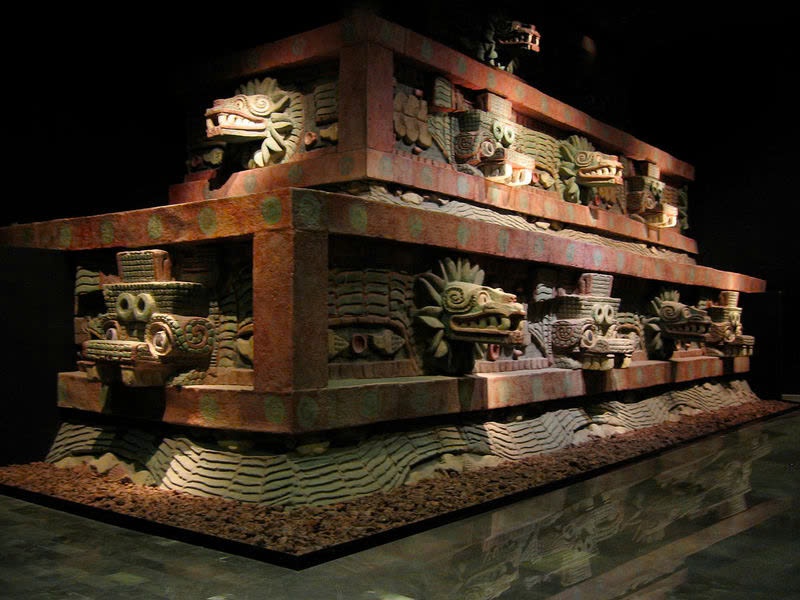A Testament to Time and Creation
At the center of ancient Teotihuacan lies a stunning edifice that has intrigued archaeologists and history aficionados for countless years. The Temple of the Feathered Serpent, also referred to as the Pyramid of Quetzalcoatl, is not merely an architectural wonder; it functions as a cosmic clock that narrates the tale of creation and the flow of time.

The Serpent’s Story
As you approach the temple’s eastern side, the intricately sculpted heads on its facade instantly catch your eye. These stone guardians, crafted in the 3rd century, alternate between the feathered serpent Quetzalcoatl and a mysterious crocodilian deity. Between these figures, bas-relief carvings illustrate sinuous serpent forms, complete with rattlesnake features.

Interpreting Ancient Symbolism
The people of Teotihuacan did not leave behind written records in the conventional sense. Instead, their artistry acted as a sophisticated form of communication, interlacing pictographs and ideograms to express deep concepts about their existence and beliefs.
Quetzalcoatl: The Feathered Serpent

The heads of the feathered serpent are laden with meaning. The feathers symbolize both the blossoms of flowering crops and sunlight rays, linking Quetzalcoatl to agriculture and celestial energy. A curling eyebrow conveys notions of duality, infinity, and the swirling universe.
The Crocodilian Enigma
The crocodile-like heads have ignited discussions among scholars. Some interpret them as Cipactli, a primeval crocodile from Aztec mythology. Others see the extended snout as Xiuhcoatl, the Fire Serpent that guided the sun across the heavens.
A Cosmic Sanctuary Below

If you explore beneath the pyramid, you’ll discover a tunnel that seems to transport you through the cosmos. Hundreds of clay spheres, shimmering with pyrite, line the passage walls, creating a starry corridor leading to three sacred caves. This underground network may have functioned as a shrine to creation and possibly served as a venue for royal births to represent divine heritage.
The Great Clock of Teotihuacan
Marking the Days
The temple’s architecture is intricately tied to the sacred calendar. It is believed that the four faces of the pyramid originally showcased 260 serpent heads—one for each day of the ritual year. A small gap between the carved teeth may have acted as a spot for offerings or to indicate the current day for all to observe.
The Ciudadela: An Expansive Ceremonial Hub
The Temple of the Feathered Serpent is situated within the Ciudadela, a vast complex capable of accommodating the entire population of Teotihuacan. Featuring 13 structures that represent the 13-day “weeks” of the calendar, this space was designed for grand ceremonies that celebrated the passage of time and honored deities.
A Legacy Etched in Stone
The Temple of the Feathered Serpent serves as a testament to the creativity and cosmic insight of the ancient Teotihuacanos. It transcends mere pyramid status—it stands as a monumental clock, a narrative of creation, and a glimpse into a civilization that viewed time and space as intricately linked. As archaeologists continue to unveil its mysteries, the temple remains a source of fascination and a connection to our distant past.

